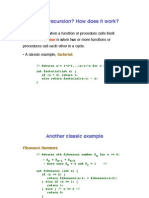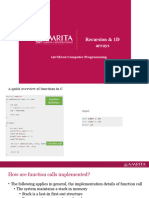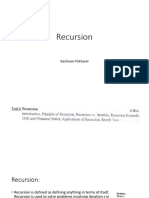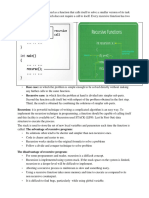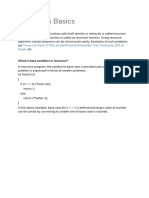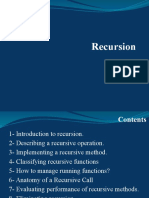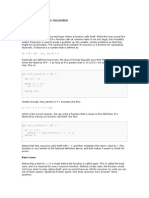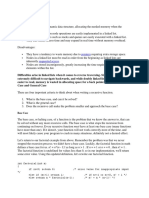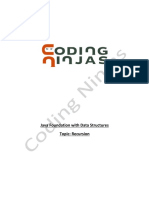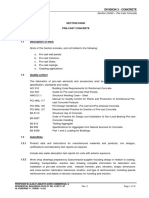0% found this document useful (0 votes)
96 views18 pagesTail Recursion
The document discusses subroutines and control abstraction, focusing on tail recursion, tree recursion, and stack smashing. It explains tail recursion as a method that allows the compiler to optimize recursive calls by reusing stack space, and contrasts it with non-tail recursive functions. Additionally, it addresses stack smashing as a vulnerability in C/C++ due to lack of array bounds checking, which can lead to buffer overflow issues.
Uploaded by
amankum25725Copyright
© © All Rights Reserved
We take content rights seriously. If you suspect this is your content, claim it here.
Available Formats
Download as PDF, TXT or read online on Scribd
0% found this document useful (0 votes)
96 views18 pagesTail Recursion
The document discusses subroutines and control abstraction, focusing on tail recursion, tree recursion, and stack smashing. It explains tail recursion as a method that allows the compiler to optimize recursive calls by reusing stack space, and contrasts it with non-tail recursive functions. Additionally, it addresses stack smashing as a vulnerability in C/C++ due to lack of array bounds checking, which can lead to buffer overflow issues.
Uploaded by
amankum25725Copyright
© © All Rights Reserved
We take content rights seriously. If you suspect this is your content, claim it here.
Available Formats
Download as PDF, TXT or read online on Scribd
/ 18

